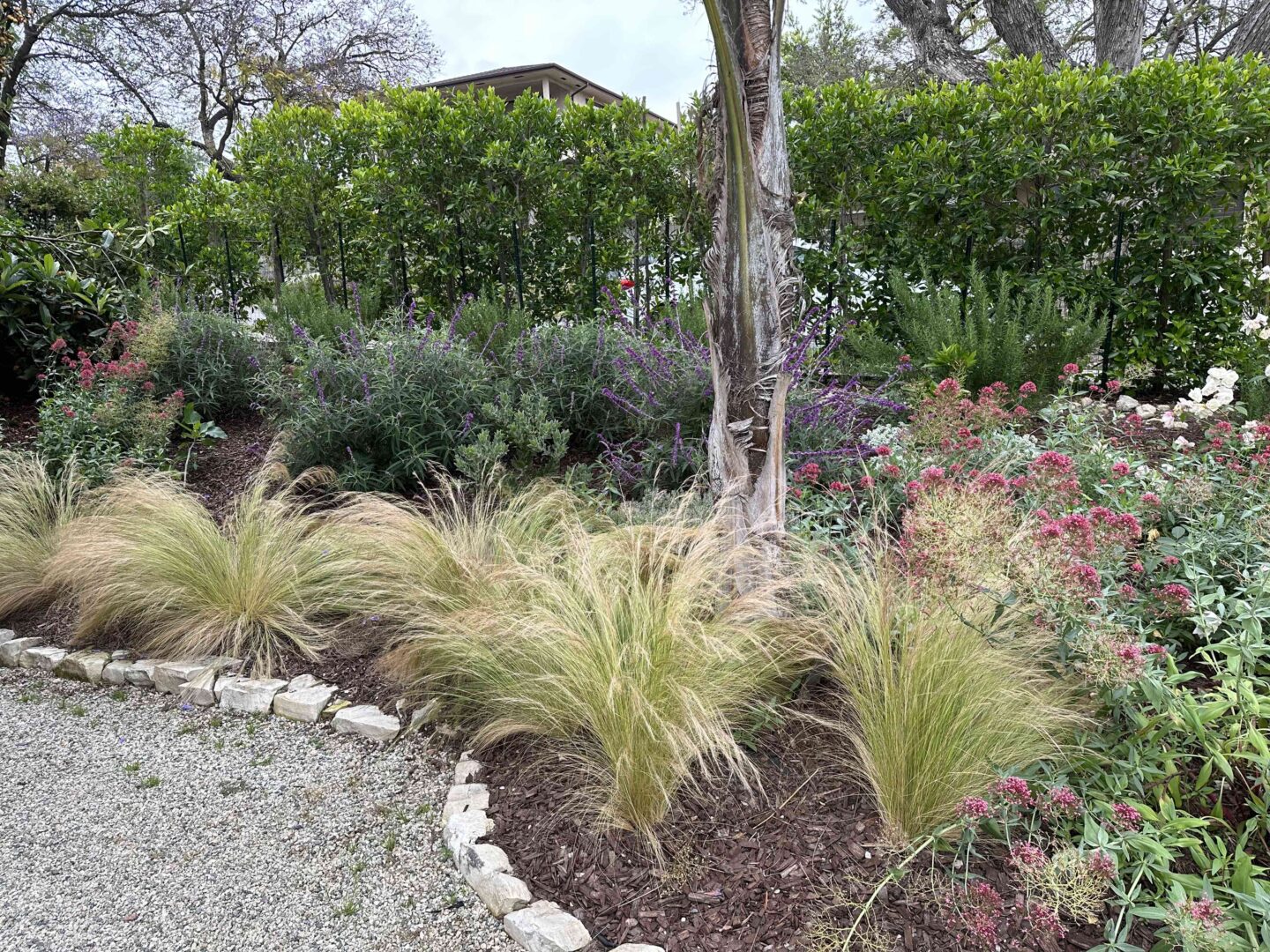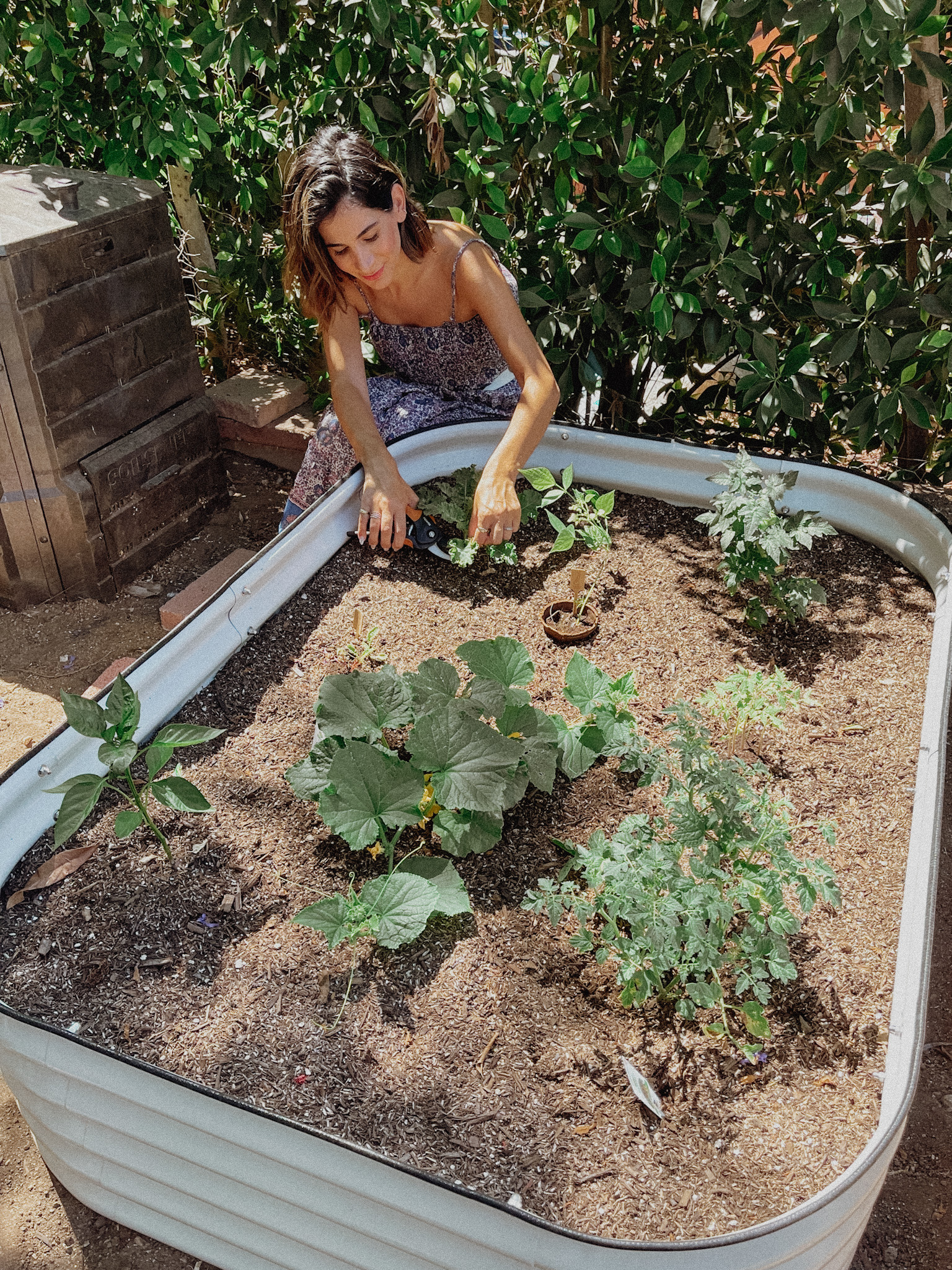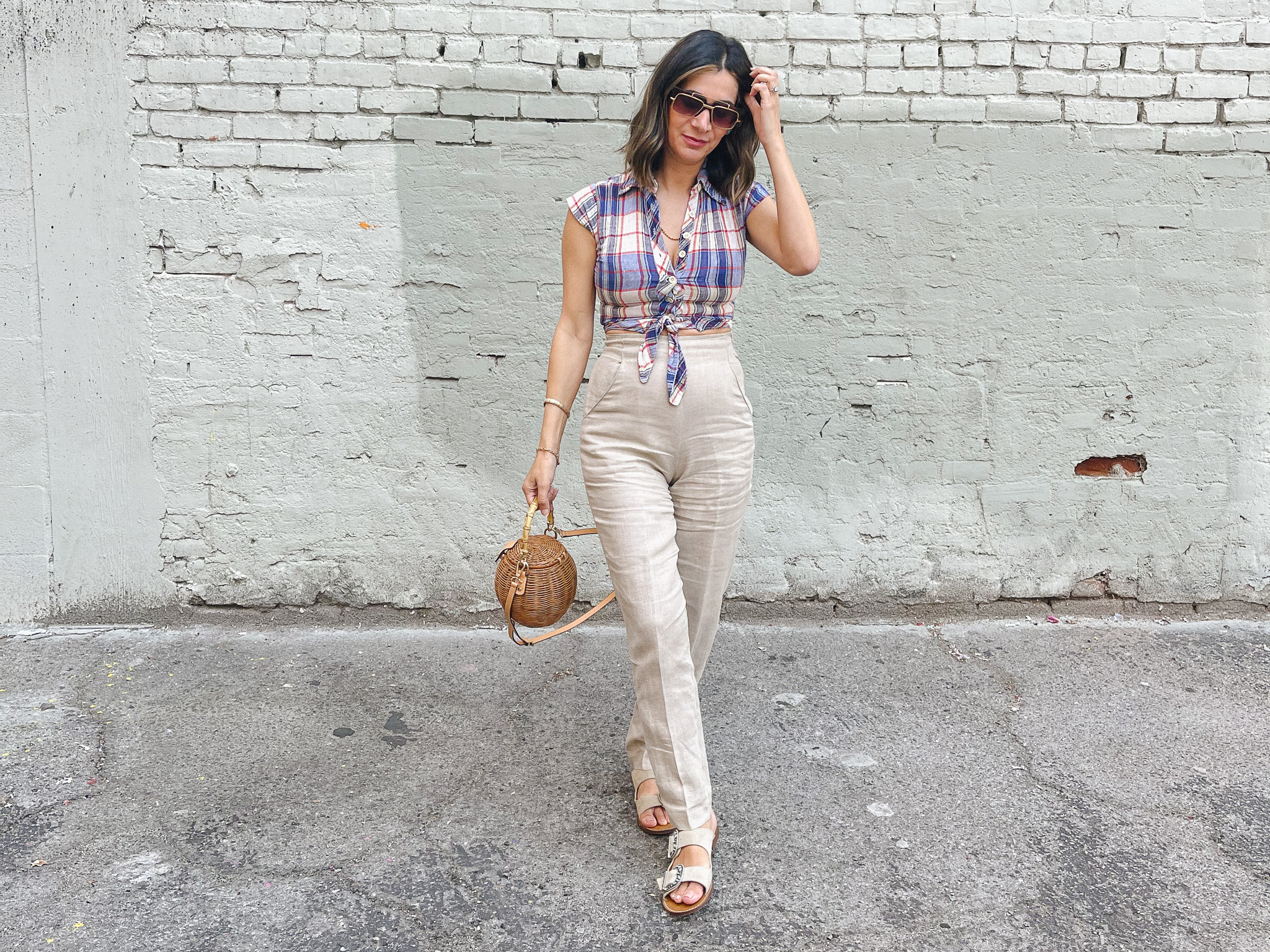
My love of wildflowers started with a free packet I received as part of a gift bag. I decided to spread it over a sloped area of our yard and bam – 8 weeks later it was almost a super bloom. I didn’t touch the flowers and the following year it was even more explosive dose of the most beautiful and fragrant flowers. Southern California is home to a vast array of beautiful wildflowers that can brighten up any garden and your day. I can’t tell you how excited I get to check out my bright blooms on the daily! Whether you’re an experienced gardener or a newbie, planting a wildflower garden can be an enjoyable and rewarding experience. Here are some tips and tricks on how to get started on creating a stunning wildflower garden in Southern California. You can apply these tips to any region, just check local planting guidelines for your zone as it’s recommended waiting until after the last frost to plant seeds!
- Choose the right spot
Choosing the right location for your wildflower garden is crucial. Wildflowers typically thrive in areas with full sun exposure, so look for a spot in your garden that gets at least six hours of direct sunlight per day. You’ll also want to make sure that the soil is well-draining, as wildflowers don’t like to sit in water. Southern California is known for its clay soil, so adding some sand or compost to the soil can help with drainage. My garden has been tested this year with the intense rain but the sloped area is in the sun all day and wildflowers thrive in the sun!
- Choose the right seeds
Choosing the right wildflower seeds is just as important as choosing the right spot. There are many different types of wildflowers that grow in Southern California, so you’ll want to choose seeds that are native to the region. Native wildflowers are adapted to the local climate and soil conditions, making them easier to grow and maintain. Some popular wildflowers in Southern California include California poppy, lupine, and sunflowers. The first seed mix I had was a Southern California blend which has poppy, lupine, cosmos, alyssum, daisy, and bluebells. This seed mix is very similar to the one I have. I highly recommend buying a “pollinator mix” as it enhances biodiversity and gives you a longer season of wildflower blooms! They each grow in different intervals sso you get to enjoy your garden longer. I recommend aiming for 6-10 different types of wildflowers if you’re looking to create your own mix.
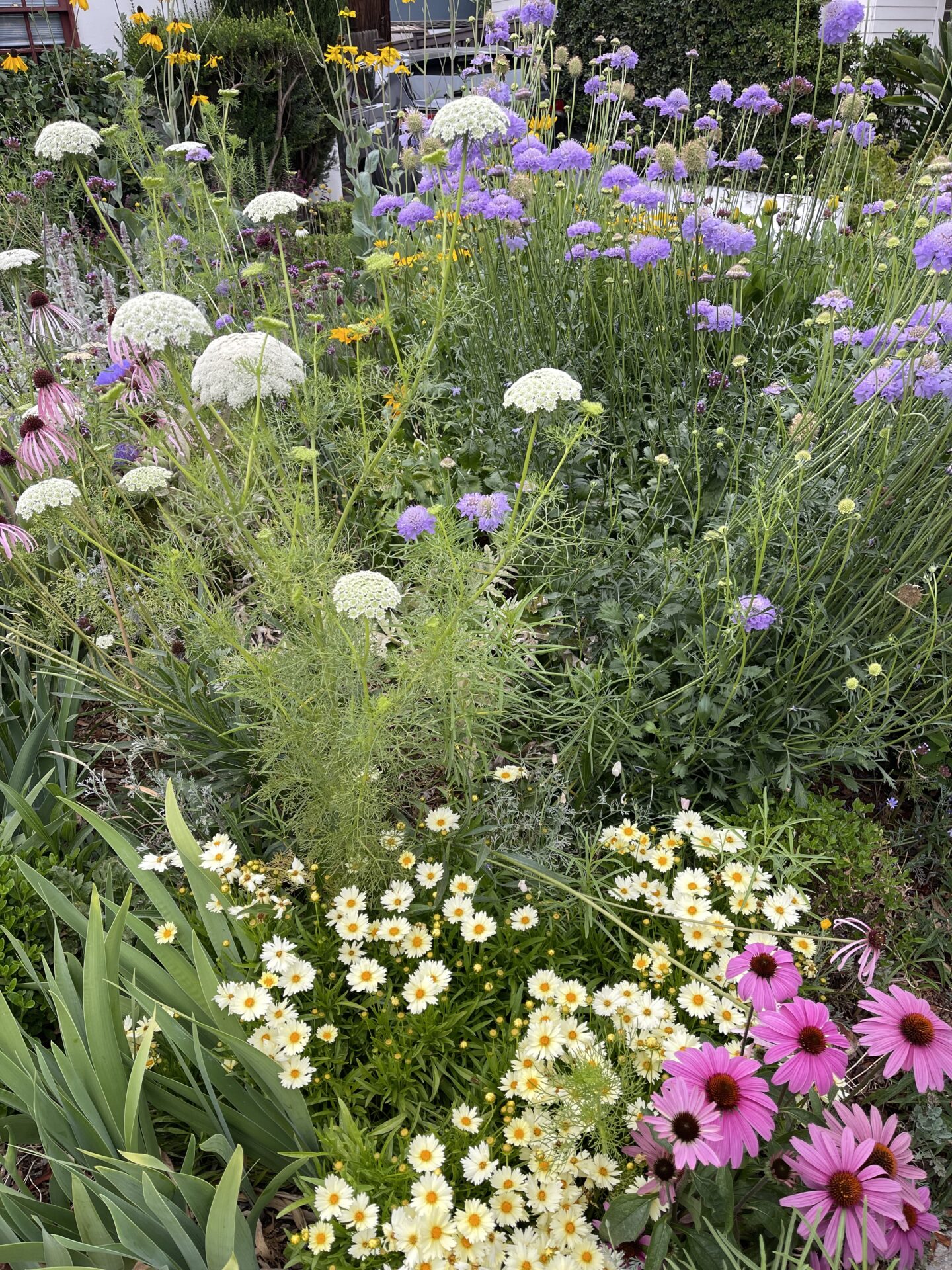
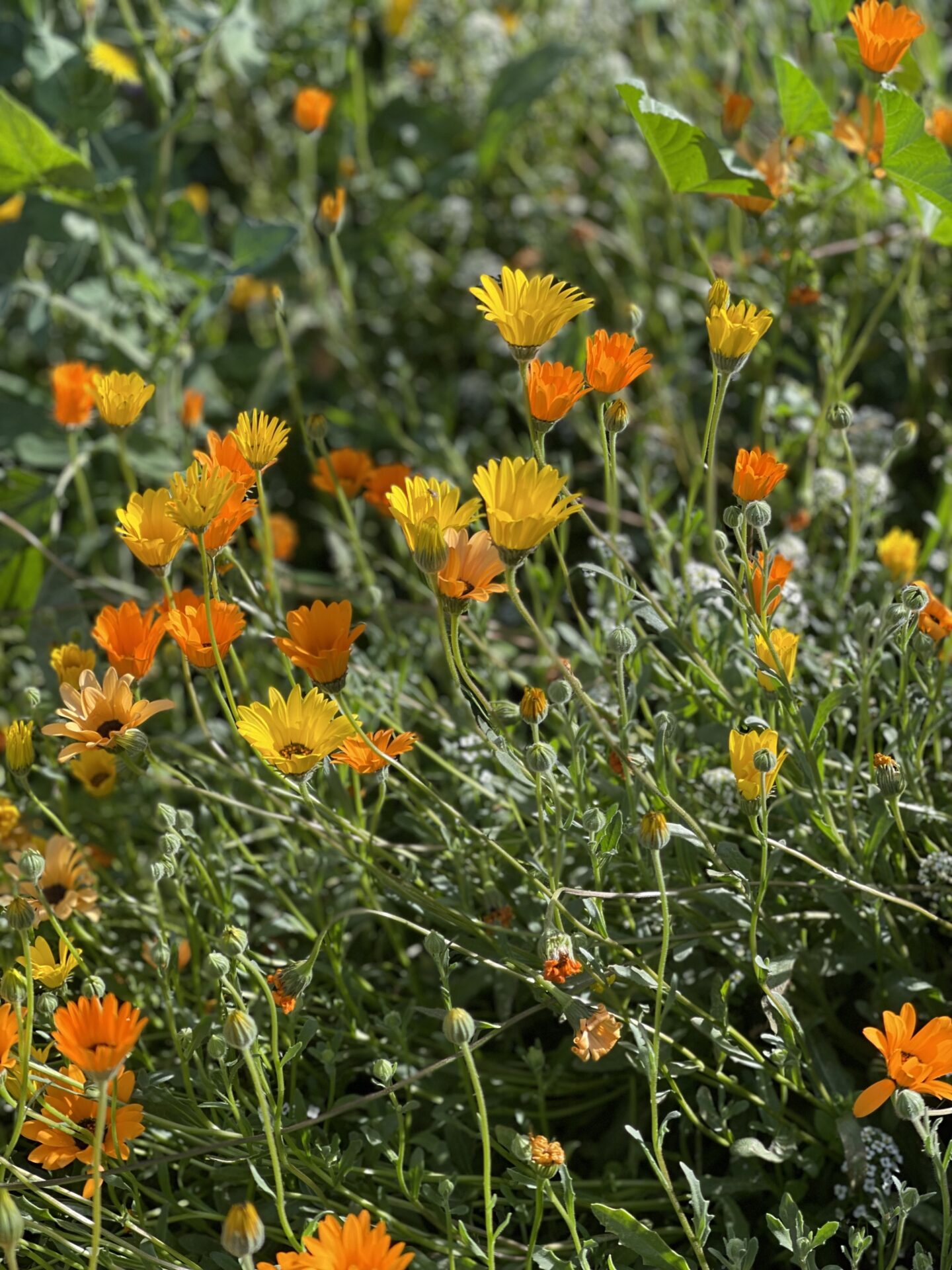
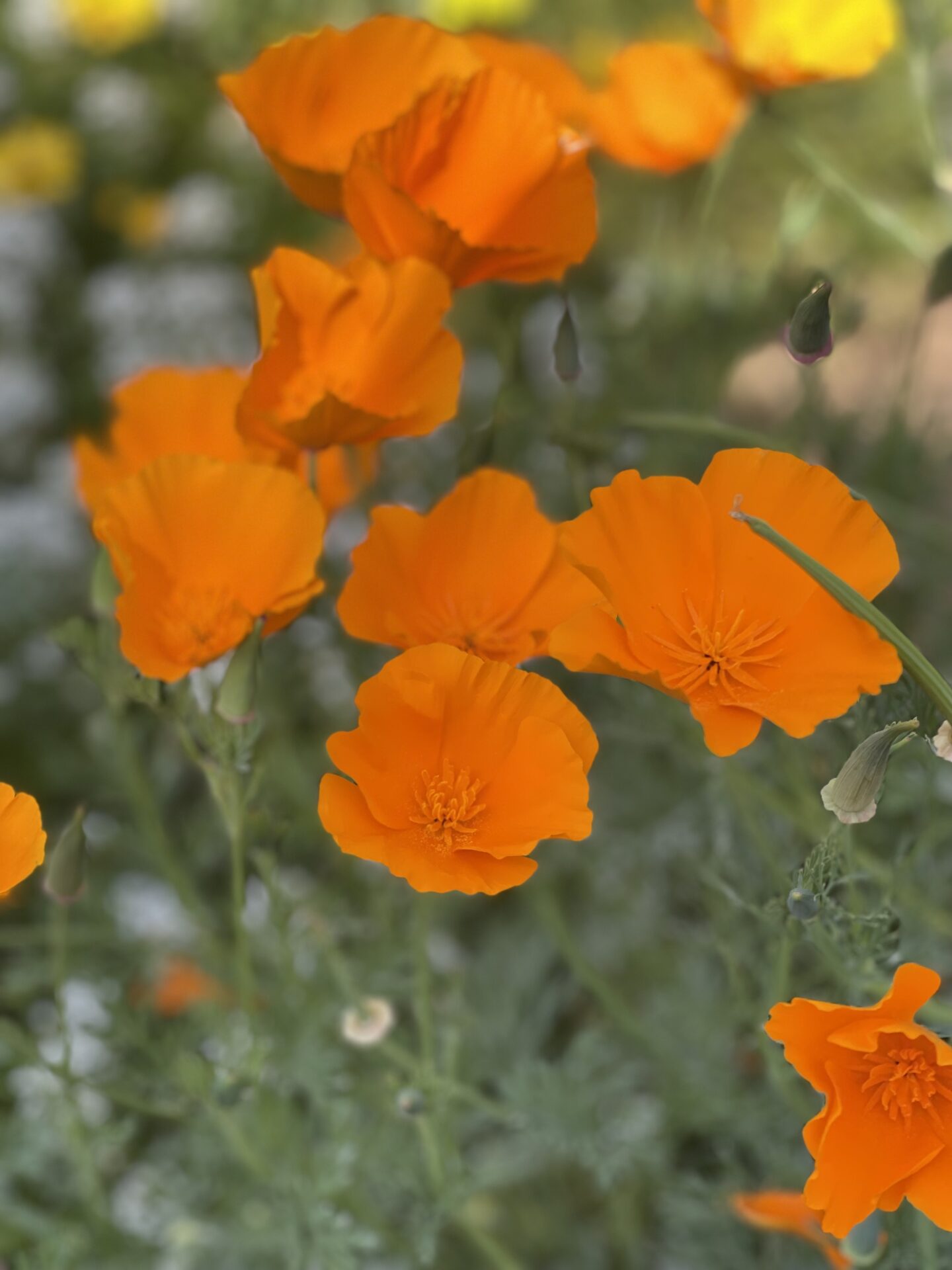
- Prepare the soil
Before planting your seeds, you’ll want to prepare the soil. This involves removing any weeds or debris from the area and loosening the soil to a depth of at least six inches. If the soil is too compacted, the roots of the wildflowers won’t be able to penetrate the soil, so make sure to loosen it up. Don’t cultivate during or right after a heavy rainstorm, instead wait until the upper few inches of the soil has drained out a bit.
- Plant the seeds
Once the soil is prepared, it’s time to plant the seeds. You can scatter the seeds by hand or use some soil from the area you’ll be spreading to ensure even distribution. If you’re looking to create a cutting garden with certain areas reserved for certain plants, then follow planting guidelines as wildflowers have different planting depths and spacing requirements. I never followed spacing requirements because I just wanted a nice mix of flowers and just wanted a super colorful bloom. After planting the seeds, you’ll want to water the area thoroughly with a quick soak from the hose. You can also wait to spread the seeds right before rainfall as it’ll help the seeds settle in. It’s important to keep the soil moist until the seeds germinate, which can take anywhere from a few days to a few weeks.
5. Maintain the garden
Wildflowers are pretty low maintenance, but they do require watering, removing any weeds or debris, and deadheading the flowers. The first two years, I didn’t follow a strict watering schedule or remove any spent flowers and we had incredible growth the following year. The great thing about wildflowers is they’re self-seeding, so once you get a good bloom and let them go to seed, they’ll pretty much take care of themselves. Just note that weeds and wildflowers look the same as seedlings so if you’re not sure which it is, just wait and then hand pull the weed. Because of the heavy rains, I did get a lot of weeds this year which I hand pulled one afternoon. If you don’t address the weeds, they will take away nutrients, sun and water from your wildflowers.
